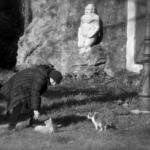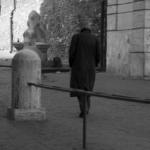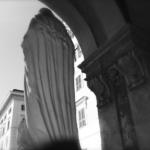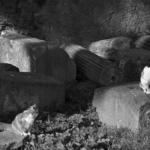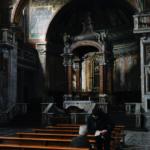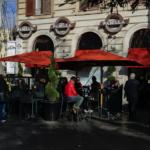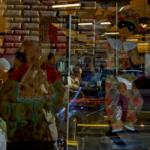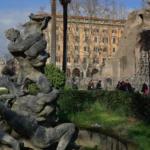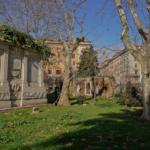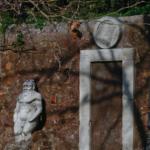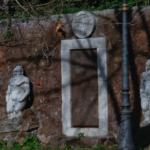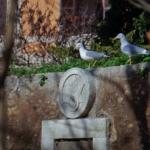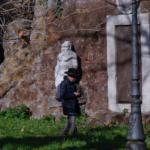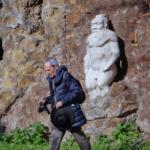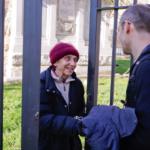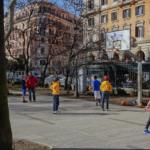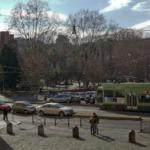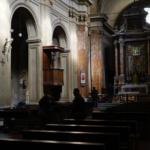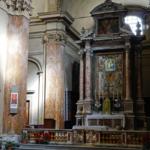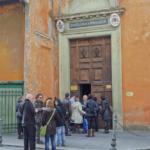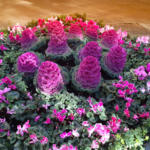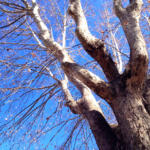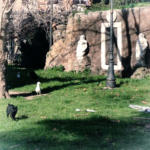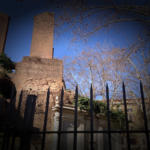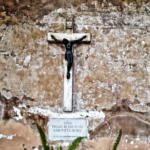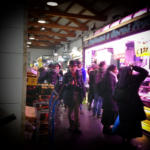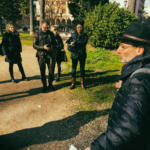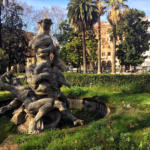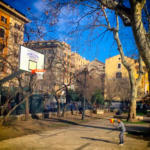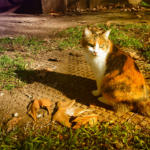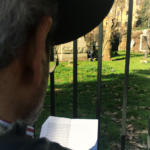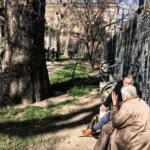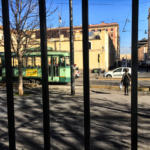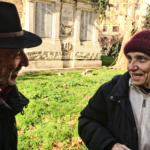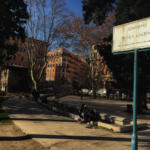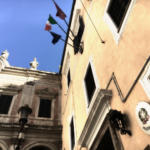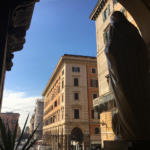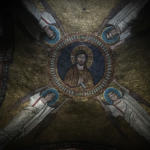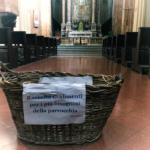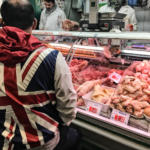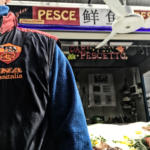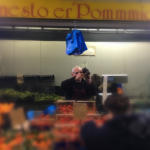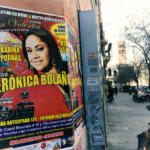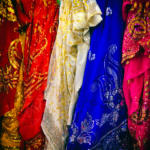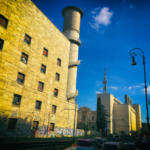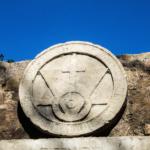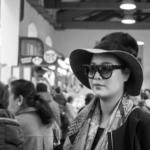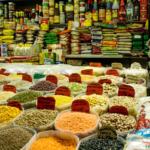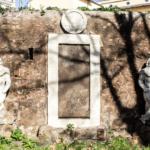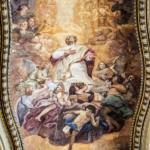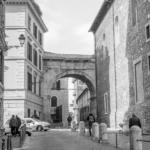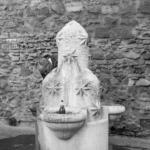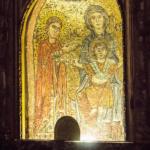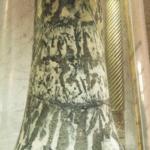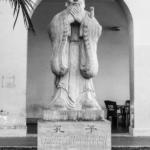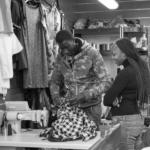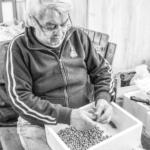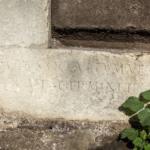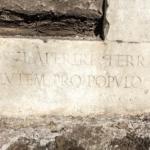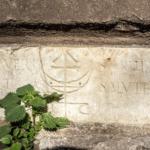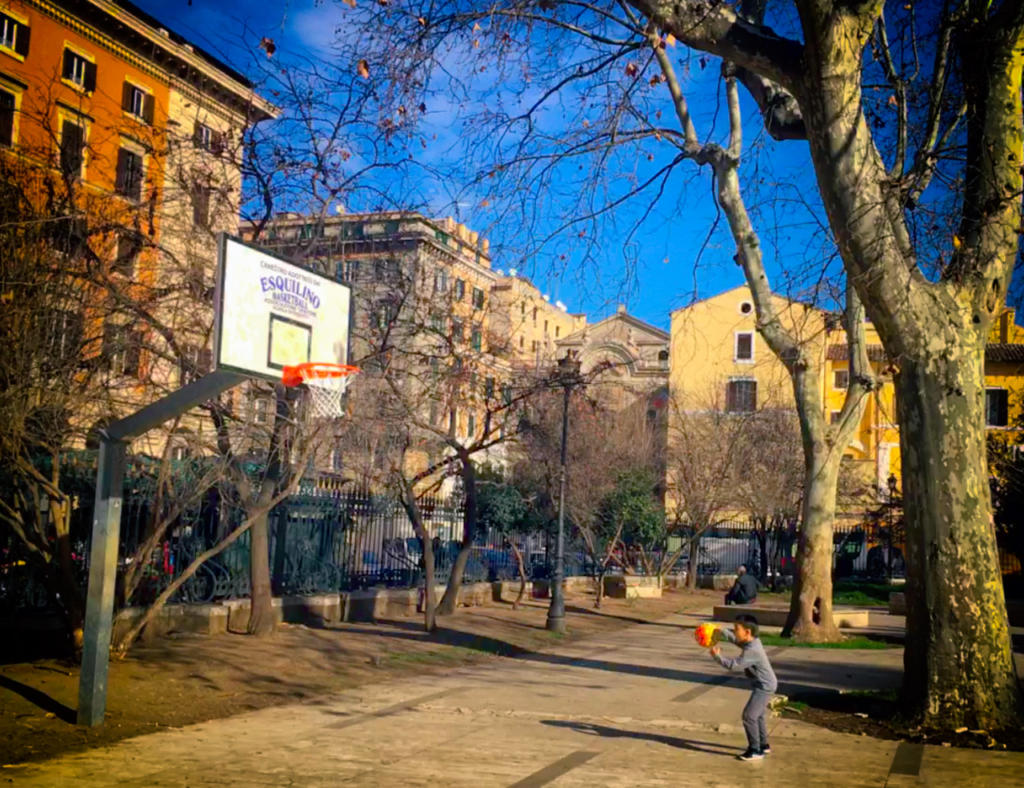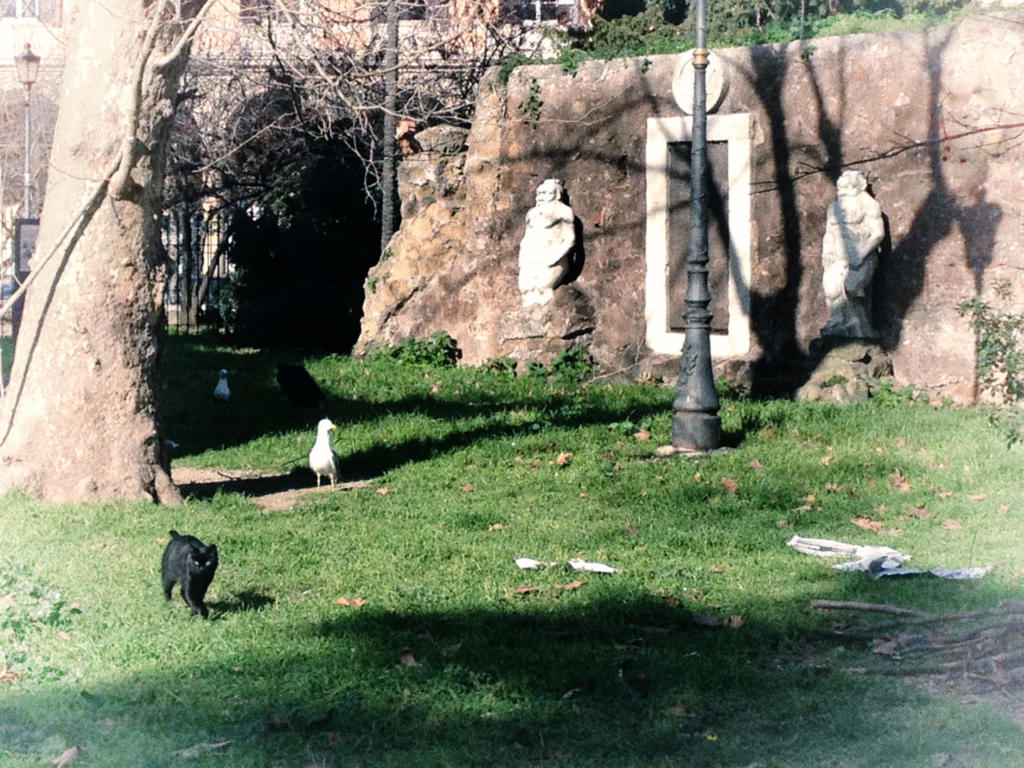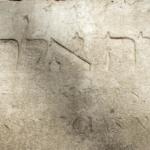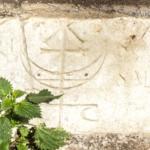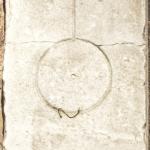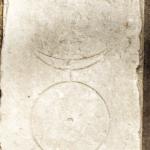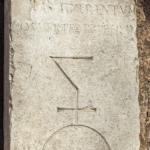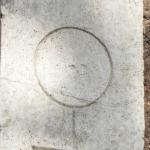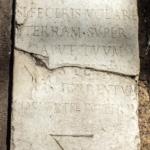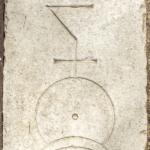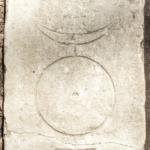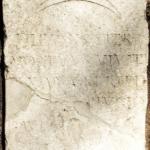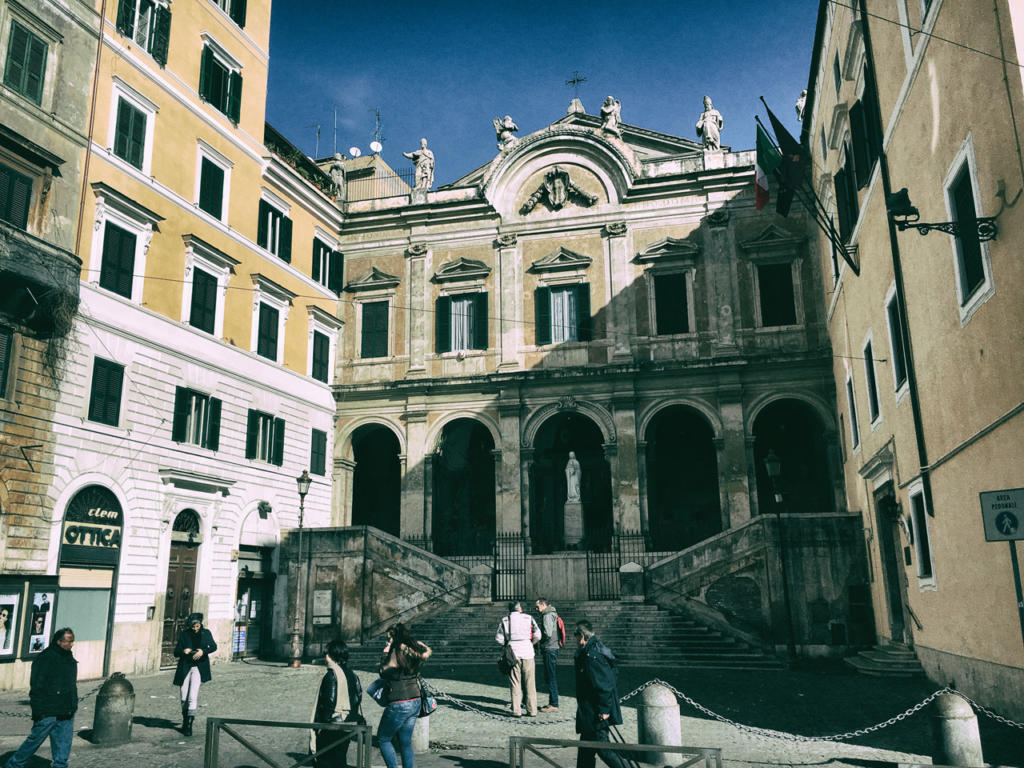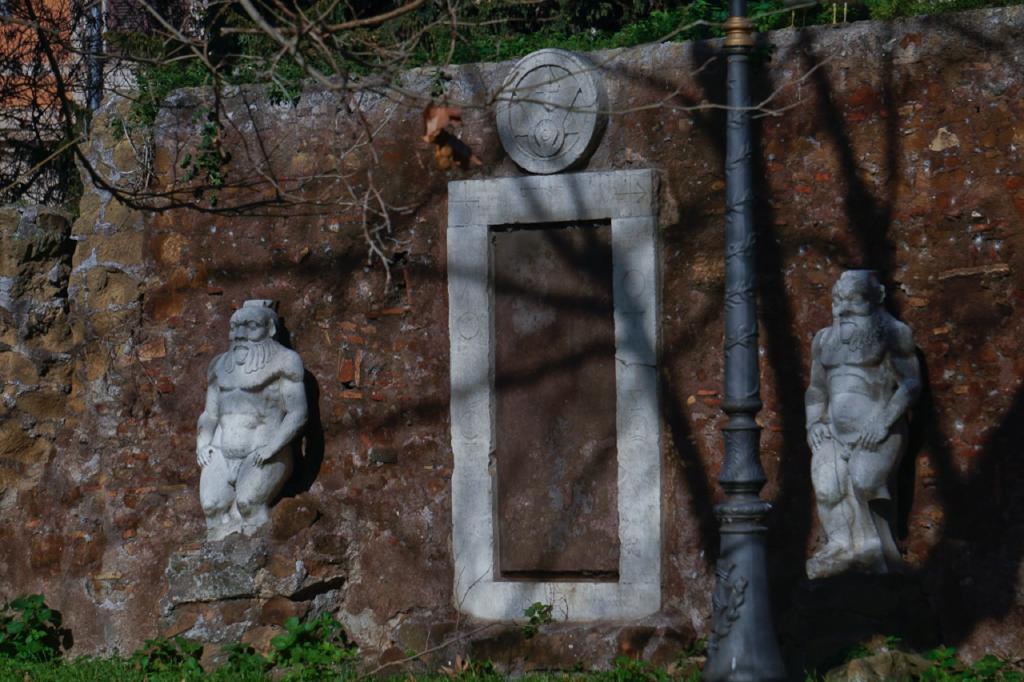 In a Saturday morning of a very spring-February in Rome organized group with Rome central and Meetup Photography Social Club of Rome, by super vision of Osvaldo Sponzilli.
In a Saturday morning of a very spring-February in Rome organized group with Rome central and Meetup Photography Social Club of Rome, by super vision of Osvaldo Sponzilli.
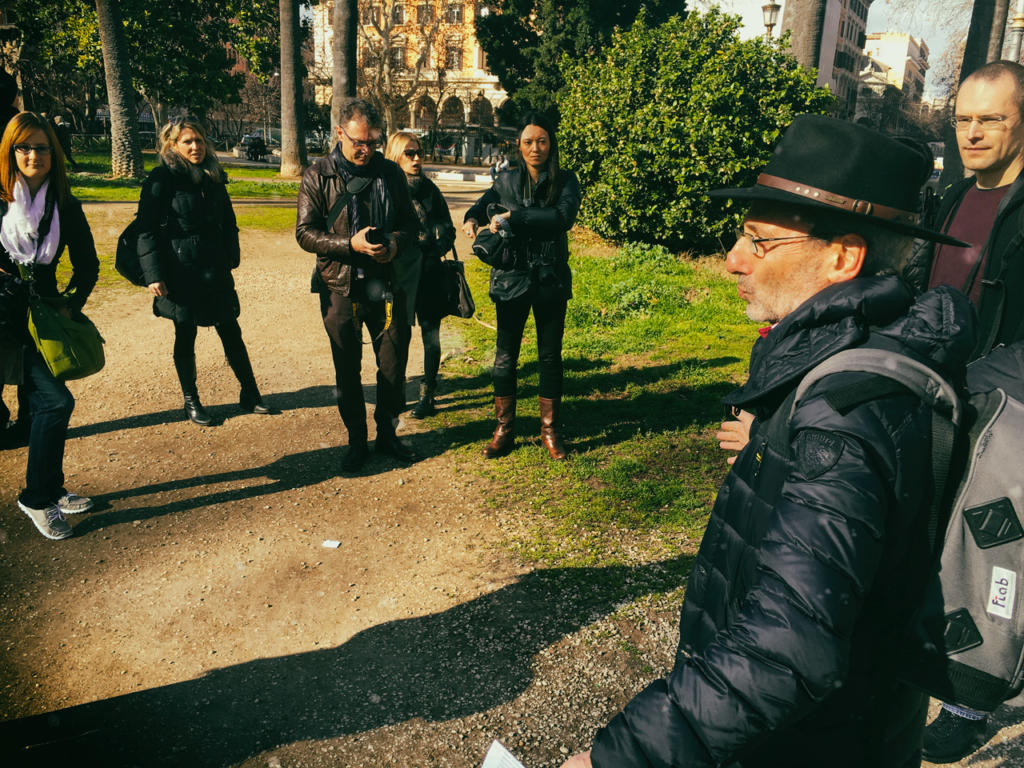 This new walking tour, totally free, is dedicated to The Magic Door, Piazza Vittorio and dell’Esquilino Market: La Porta Magica, Piazza Vittorio e il Mercato dell’Esquilino. Some people meet in front of Panella, the historian bakery in Via Merulana, in the heart of a Roma still sleepy.
This new walking tour, totally free, is dedicated to The Magic Door, Piazza Vittorio and dell’Esquilino Market: La Porta Magica, Piazza Vittorio e il Mercato dell’Esquilino. Some people meet in front of Panella, the historian bakery in Via Merulana, in the heart of a Roma still sleepy.
{google_map}41.894224, 12.500749{/google_map}
Photographers
Paola Noemi Antonelli :
Antonio Barbieri
Monica P (with iPhone 4s)
Igor Wolfango Schiaroli (con iPhone 6s)
Osvaldo Sponzilli
Walking itinerary
The appointment with Osvaldo Sponzilli and Social Club photographers
has as its goal the area around Piazza Vittorio Emanuele, in the Esquilino district of the capital.
The itinerary includes the discovery of the Magic Door and the Nymphaeum of Alexander Severus in the garden of Piazza Vittorio, the largest colonnated square in Rome, built in the early years during Italian Unity (between 1882 and 1887). Crossed the garden, visit the near Church of St. Eusebius, where on January 17 held the annual blessing of animals in honor of St. Anthony Abbot.
A short walk in the direction of Basilica Santa Maria Maggiore on to the small, hidden and little known Santa Prassede (https://it.wikipedia.org/wiki/Basilica_di_Santa_Prassede) and, finally, the last stage at the historic market local, Nuovo Mercato Esquilino (http://www.meetart.it/tappa/559/)one of the largest in the city.
A trip inside the walls of a city that has many hidden sides and small artistic gems to be discovered in the name of pagan and religious cults, which over time have overlapped and layered side by side.
When you least expect the roads you drive every day, the corners of a city that crosses hurriedly turn offering to your eyes inattentive the sight of a small chest full of treasures that you never imagined.
How many times has it happened to stop at the usual stop of the metro or tram and ask how it was before this place? What was 50, 100, 500 years ago, here?
Have you ever thought about the urban history pulsing along the alleys, streets and parks scattered throughout the city where you live? If it were not for consecrated to the memory locations with squares, streets and buildings consecrated all’humana historiae, many corners of the city would remain anonymous. So the walking tour of the 6 of February 2016 made us delve into a magical area of Rome!
A few meters from Termini station and from Porta Maggiore, in the neighborhood that is located close between San Giovanni, Monti and Esquiline part once stood a hill with squares, churches and streets that disappeared to make room for Piazza Vittorio Emanuele II (known more simply as Piazza Vittorio), created by the architect Gaetano Koch after the second half of the nineteenth century., with 280 columns of the arcades of garish nineteenth century buildings (luxury residences for accommodation of Minsteri’ neighbors) that surround it. At the center of a garden which at the time represented “a masterpiece of landscape architecture: a ring of tall plane trees, cedars of Lebanon, magnolias and palm trees directly from Bordighera, a gift from Queen Margherita”.
During the works for the construction of the entire complex they were found large pits carnarie, memories of the old Esquiline cemetery, the so-called “common field” or “villain” where slaves, criminals and murderers were buried. It also disappeared Villa Palombara built in 1653 by the Marquis Massimiliano II Palombara admirer of alchemy and esoteric cults. The villa remained only the “Magic Door” one of the secondary entrances of the building, left a legacy perhaps for the popular legends that enveloped the origin and structure of mystery. It is said, in fact, that the villa was a place of meeting of alchemists, magicians and scientists in search of the “Philosopher’s Stone” which would have the power to transform base metals into gold. And the door, the so called “magic”, would contain the formula for this “Great Work” (the metallic transmutation, as appeared on some alchemy ancient manuscripts) engraved on the doorposts, on the pediment, on the lintel and on the doorstep.
Even today, the port is visible in a corner of the garden, enclosed by grilles and guarded by a host of cats, to which ladies wear delicious to eat. And the entrance to this locked gate we met.
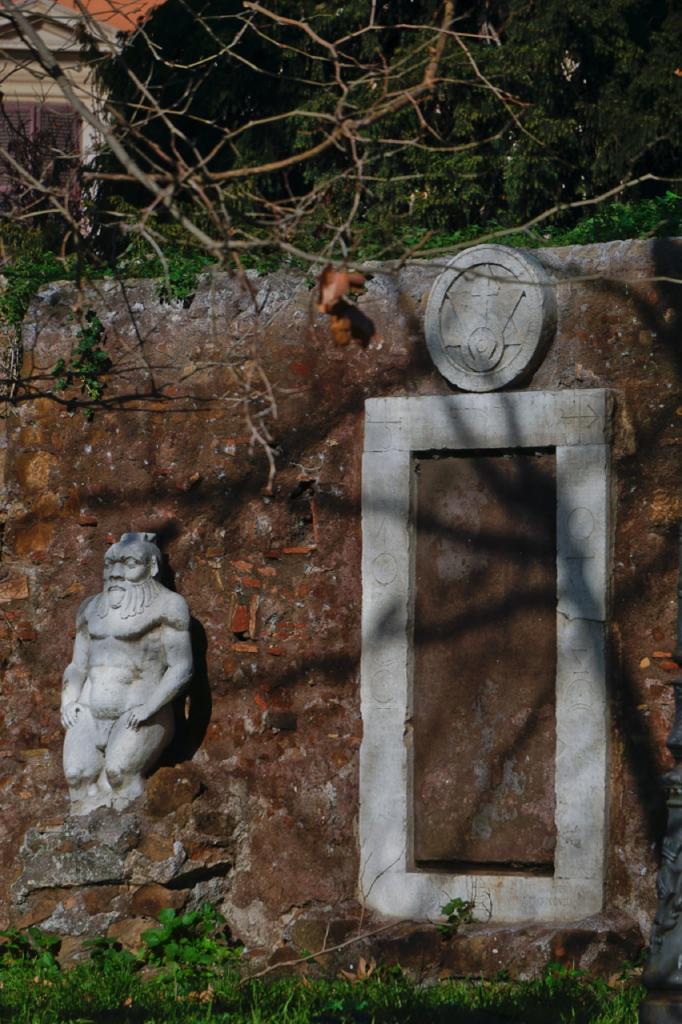 The Magic Door is one of the most important alchemical testimony to the world and keep it, like two security guards of a sacred place, there are two large twin statues, marble, from the grotesque appearance of the Egyptian god Bes, it is said from the Temple of Serapis. Despite the different interpretations of the Magic Door, also called “Alchemy” or “of Heaven,” is a great mystery remained unresolved after more than three centuries.
The Magic Door is one of the most important alchemical testimony to the world and keep it, like two security guards of a sacred place, there are two large twin statues, marble, from the grotesque appearance of the Egyptian god Bes, it is said from the Temple of Serapis. Despite the different interpretations of the Magic Door, also called “Alchemy” or “of Heaven,” is a great mystery remained unresolved after more than three centuries.
According to the legend, the Marquis of Palombara hosted, for a night, a stranger who was able to know how to accomplish the “Great Work” by using a type of grass. The next morning he was found a little pile pure gold and a full sheet of magic formulas, while the even stranger the shadow. 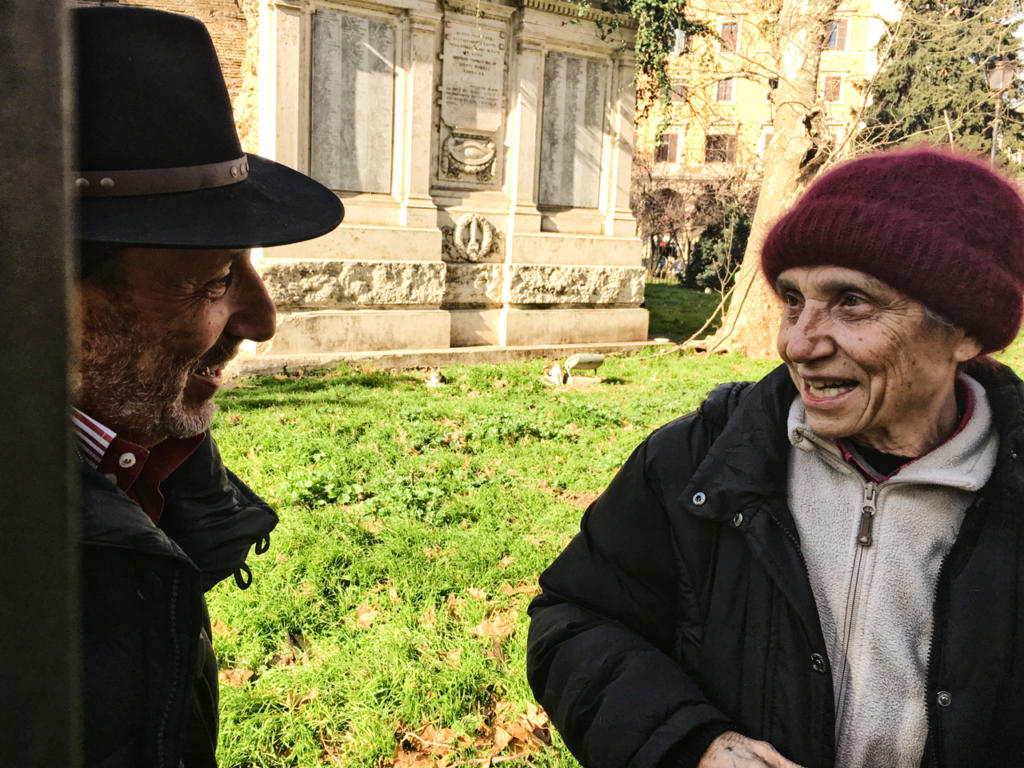 The Marquis and other famous alchemists not, however, managed to interpret nor to use the symbols and formulas left. So it was, that the disappointed Marquis decided to play on the door all the symbols and the formula: made available to the lucky and skilled experts in the field.
The Marquis and other famous alchemists not, however, managed to interpret nor to use the symbols and formulas left. So it was, that the disappointed Marquis decided to play on the door all the symbols and the formula: made available to the lucky and skilled experts in the field.
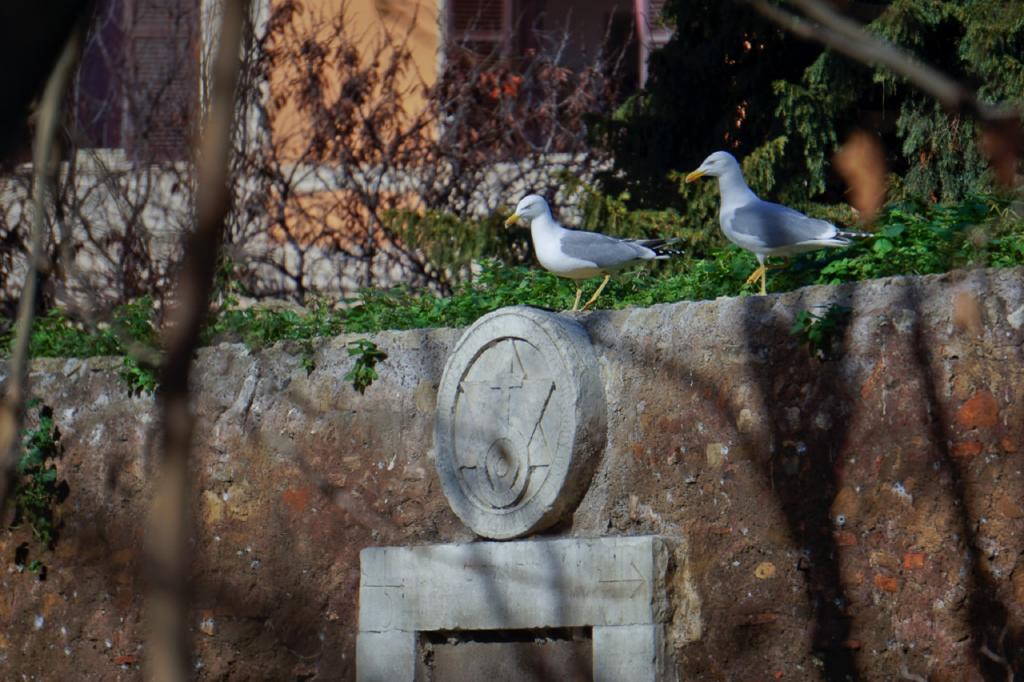 Magic Door stands on a marble disk on the edge of which the following words are engraved: “TRIA sunt MIRABILIA DEUS HOMO ET MATER ET VIRGO Trinus ET UNUS” which means “Three are the wonders: God and Man, Mother and Virgin, Three and One”.
Magic Door stands on a marble disk on the edge of which the following words are engraved: “TRIA sunt MIRABILIA DEUS HOMO ET MATER ET VIRGO Trinus ET UNUS” which means “Three are the wonders: God and Man, Mother and Virgin, Three and One”.
Within this disc is the Seal of Solomon, known as the Star of David, the two equilateral triangular cross. Considered a powerful protective talisman for magical practices, in alchemy symbolizes the cosmic balance, because union between fire and water. Superimposed on the seal there is the cross of the four elements, the symbol of the Earth, superimposed on a circle which reads in Latin “CENTRUM IN TRIGONO CENTRES” – “The Centre is in the center of the” Triangle; inside you can see another smaller circle with a dot in the middle: the oculus, the alchemical symbol of the Sun and gold. Lintel, under the Hebrew word “Ruah Elohim” (God’s Spirit), there is the Latin inscription “HORTI MAGIC INGRESSUM HESPERIUS CUSTODIT DRACO ET SINE ALCIDE COLCHIDAS DELICIAS NOT GUSTASSET IASON” – “A dragon guards the entrance to the garden magic of the Hesperides and without Hercules, Jason would not have tasted the delights of Colchis. ”
Upon the posts there are six entries located under many signs of Planets, associated to the corresponding metals.
At the top, on the left, Saturn Lead: “WHEN IN YOUR DOMO NIGRI CROWS parturient ALBAS columbas TUNC VOCABERIS sapiens” – “When your house blacks give birth to white doves crows then you will be wise saying”;
in the middle, on the left, Mars-iron: “HERE SCIT COMBURERE ET AQUA WASH IGNE FACIT DE LAND coelum ET DE coelo TERRAM PRETIOSAM”, “Who can burn with water and wash with fire makes earth sky and earth sky precious “;
bottom, left, Mercury-Mercury: “AZOT ET IGNIS DEALBANDO LATONAM veniet SINE WEARS DIANAM” – “When the nitrogen and fire whiten Latona, Diana will be no robe”;
upper, right, Jupiter-tin: “DIAMETER SFERAE THAU Circuli CRUX ORBIS ORBIS PROSUNT NOT”, “The diameter of the sphere, the thau the circle, the cross of the globe do not help the blind”;
in the middle, on the right, Venus-copper: “YES feceris TERRAM SUPER FLY CAPUT TUUM EIUS pennis AQUAS torrentum convertes IN PETRAM” – “If you do the earth fly above your head, with its stone pens you will convert the streams of waters” ;
bottom, right, sun-gold, “FILIUS NOSTER Mortuus VIVIT REX AB IGNE REDIT ET spouses GAUDET HIDDEN” – “Our son died lives, the King returns from the heat and enjoy the occult coupling”.
On the threshold there is the word “SI SEDES NON IS” – “If you do not you go sit down”, but which can also be read as a palindrome from right to left “SI NON SEDES IS” – “If you do not go sit down.”
Below, to the sides of a complex sign, “OPUS EST occultum REAL Sophi aperire TERRAM UT GERMINET Salutem PRO populo” – “You occult work of the true wise to open the land to generate salvation for the people.”
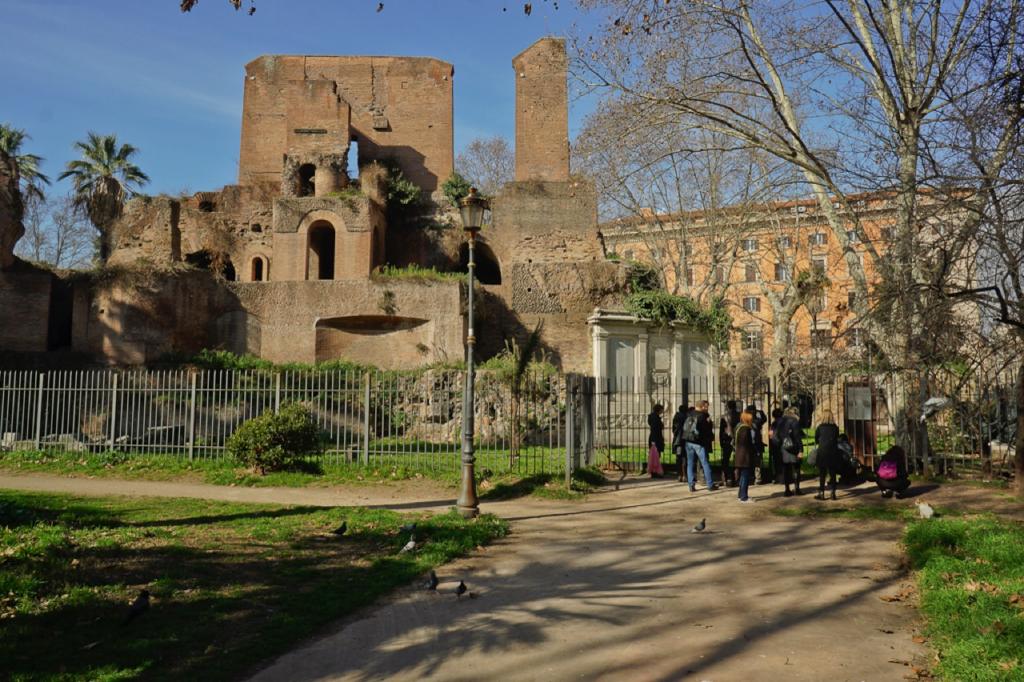 Nymphaeum of Alexander Severus
Nymphaeum of Alexander Severus
in the northwest corner of the square gardens are the remains of the “Nymphaeum of Alexander Severus”, built by the Emperor as “exhibition” of a branch of the Aqua Iulia.
During the Renaissance took the name of “Trophies of Marius” because of the two marble reliefs of the Domitian age, trophies representatives to celebrate the Germanic and Dacian campaigns of the year 89 Domitian, who remained here until 1590, when Sixtus V had them transported to the Capitol and placed on the banister of the stairway. The construction trapezoidal the Nymph was once westward and was divided into three floors: two included various environments and ducts, while the third was to appear as a great triumphal arch surmounted by an attic surmounted by an imperial chariot and other statues (like depicted in the coins). Destroyed the upper part, he remained the lower part consists of a central semicircular niche that housed a statue (perhaps that of Ocean) and was flanked by two open arches, where they had placed the two marble trophies called “Trophies of Marius”. The construction is all brickwork and had to be entirely covered with marble.
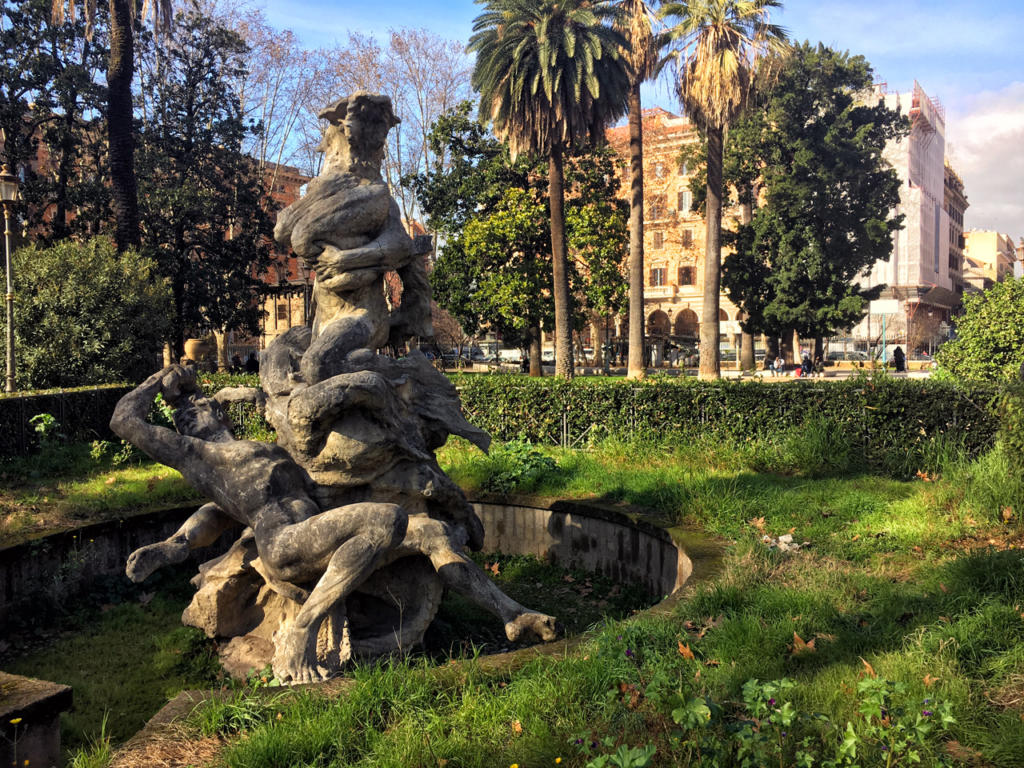 Fountain called “fritto misto”
Fountain called “fritto misto”
A little gem that rises timidly among trees and flower beds at the garden center, the particularity of this fontanaè given by marine group of tritons, dolphins and a big octopus from which derives the name stir-fry “,” as the Romans had renamed the group sculpture Mario Rutelli (great-grandfather Francesco Rutelli) had carved for the fountain of Najadi, before it was replaced by the current group of “Glauco”, always the work of the Rutelli.
Secluded, barely visible because it is located on the corner of Via Napoleone III, stands the ancient church dedicated to St. Eusebius because sort (according to tradition) on the house of Eusebio martyr, condemned by Emperor Constantius II to die of starvation in his own house. The house, transformed into “titulus Eusebii” Liberius Pope since the fourth century, was adapted to by Pope Zaccaria church in 750. After several restorations during the pontificates of Adrian I, Leo III and Gregory IV, it was rebuilt under Honorius III and Gregory IX, when it was dedicated to Ss.Eusebio and Vincenzo. The church was annexed later a convent, entrusted during the Middle Ages to the Celestine monks, who enlarged in 1588; the current appearance is due to the reconstruction of the façade made in 1711 by Carlo Stefano Fontana and the interior work by Niccolo Mattocks in 1759. Today the entrance of the church appears elevated above street level to the previous, existing before the excavation works of the mid-nineteenth century square. The staircase, closed by an iron gate, leading to the porch with five arches supported by pillars with pilasters, above which five windows with cornices and pediments open between pilasters with Ionic capitals. Still above the dedicatory inscription dated 1711 and then the frame, at the central arch, opens to arch enclosing a coat of arms. The gallery that closes the prospectus is adorned with statues of saints and two kneeling angels, while the gable of the church, topped by large metal cross, is set back from the façade. The interior has three naves. Among the special features of this church: the fresco on the ceiling of the nave depicts the “S.Eusebio Gloria”, a work of 1759 by Raphael Mengs with a particularly curious because one of the angels is actually an “angel woman” and depicts the likeness of woman loved by the artist; the sixteenth-century wooden choir stalls and the lectern in carved walnut with grotesque figures, only example in Rome. From the sacristy the elegant cloister is visible on two rows of arches separated by pilasters, the center of which a fountain is located. In the monastery attached to the church was the site of a Roman printing the first, that of George Lauer, in which the works of St. John Chrysostom noted by Francesco Aretino were printed. But the popular aspect that makes this unique church is linked to the rite of blessing of the animals every year on January 17, the feast of St. Anthony Abbot, the space in front, takes place this characteristic blessing transferred here, for traffic reasons, the nearby church of St. Antonio Abate.
The church has the name of S.Prassede, S.Pudenziana sister and daughter of a Roman senator Pudens, a disciple of St. Paul. According to ancient legend, Praxedes and Pudenziana were killed because they were burying the martyrs of the persecution of Antoninus Pius in wells located in the vast father’s own grounds. The church, founded in the ninth century by Pope Paschal I on the ancient “titulus Praxaedis” of the late fifth century, has undergone several restorations in the XV, XVII and XIX, enough to change the most original features. Despite the various interventions, the building still retains a medieval structure in the vestibule of access located along Via S. Martino ai Monti, which leads, after a long ladder, in a courtyard in which stands the simple brick facade of the church, according the original design built by Paschal I. the courtyard contains the remains of a colonnade with Corinthian capitals which probably belonged to the fifth-century basilica.
But the church also has a side entrance from the side of S.Prassede street where we are crossing off of St. Vitus and the Galliano Arch between the scents of the multi-ethnic neighborhood and the pleasant cries of children.
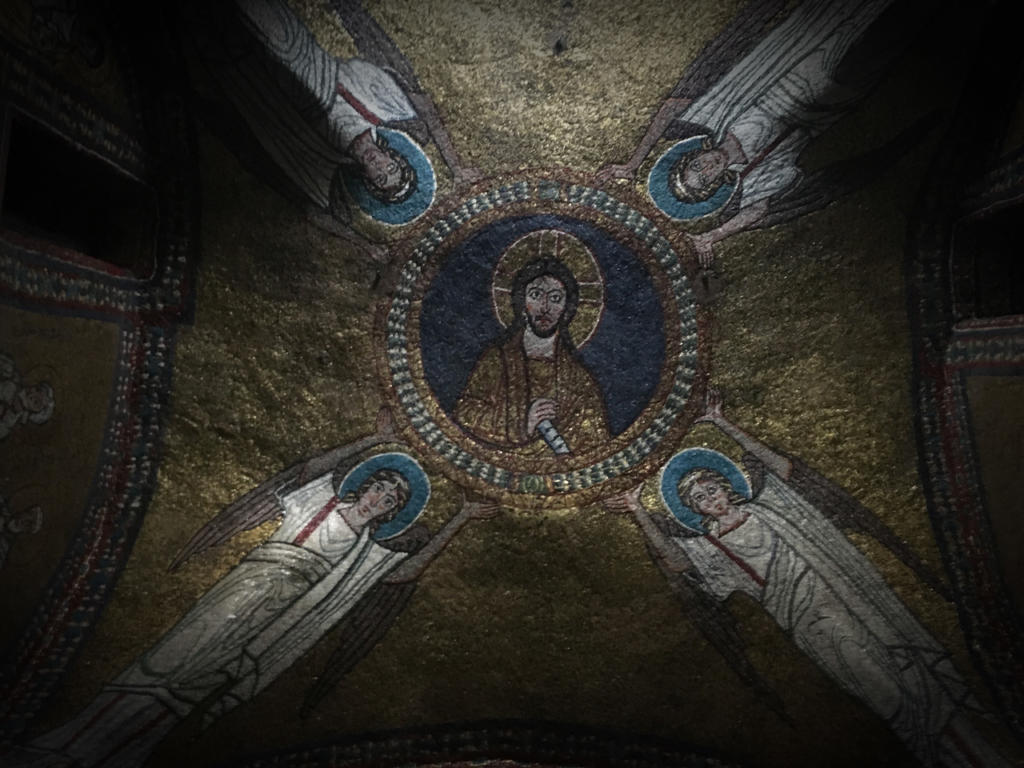 A quick visit to this church which is among the most revered in Rome to admire the beauty of the Romanesque structure that blends with medieval structures and is home to a side chapel covered with Byzantine mosaics. Byzantine artists decorated the church of golden mosaics: “those in the apse and in the choir depict the ancestors in white robes, the elect who look down from heaven, lambs with thin paws, palm trees with a beautiful plumed crest and bright red poppies” . The interior of the chapel, vaulted, with angular columns, is entirely covered with mosaics and so bright that it has been called the “Garden of Paradise”. The mosaics represent the figures of Christ, the Madonna, and the S.Prassede dell’episcopa Teodora with nimbus of the living square. In the niche above the altar there is the depiction, mosaic, the “Madonna with Child”. The floor is a very ancient example of “opus sectile” polychrome marble.
A quick visit to this church which is among the most revered in Rome to admire the beauty of the Romanesque structure that blends with medieval structures and is home to a side chapel covered with Byzantine mosaics. Byzantine artists decorated the church of golden mosaics: “those in the apse and in the choir depict the ancestors in white robes, the elect who look down from heaven, lambs with thin paws, palm trees with a beautiful plumed crest and bright red poppies” . The interior of the chapel, vaulted, with angular columns, is entirely covered with mosaics and so bright that it has been called the “Garden of Paradise”. The mosaics represent the figures of Christ, the Madonna, and the S.Prassede dell’episcopa Teodora with nimbus of the living square. In the niche above the altar there is the depiction, mosaic, the “Madonna with Child”. The floor is a very ancient example of “opus sectile” polychrome marble.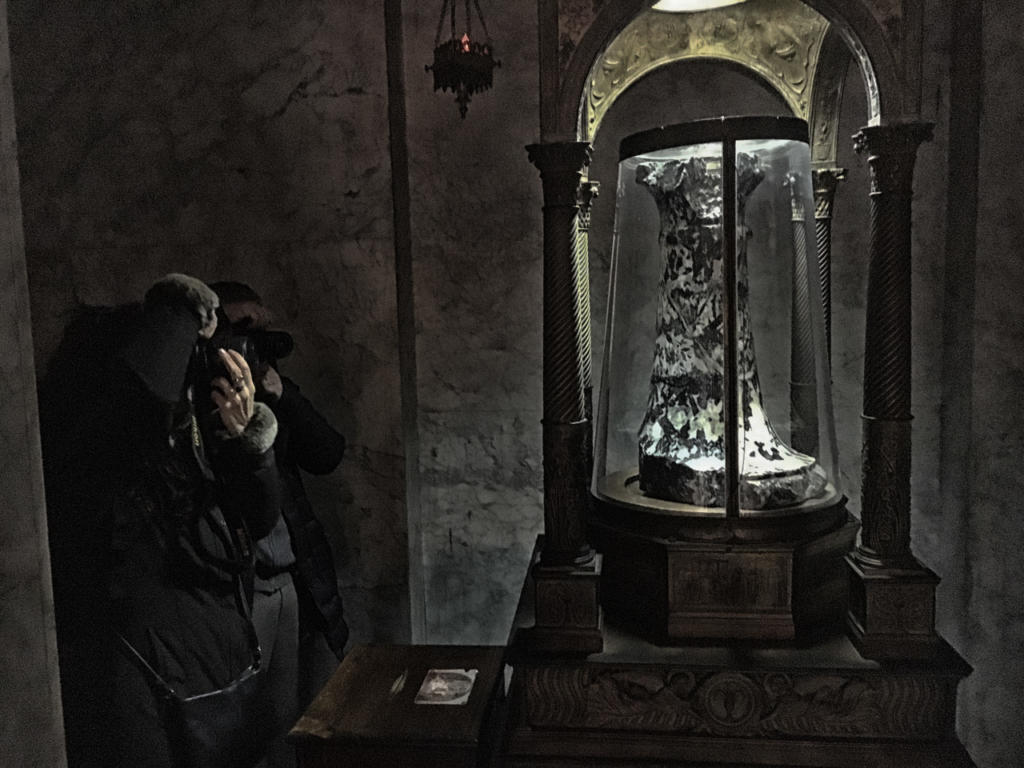 In a niche is kept to the right of a column brought to Rome from Jerusalem by Cardinal Giovanni Colonna in 1223: the “Column of Flagellation” which according to tradition is a fragment of the column to which he was bound Jesus to be scourged.
In a niche is kept to the right of a column brought to Rome from Jerusalem by Cardinal Giovanni Colonna in 1223: the “Column of Flagellation” which according to tradition is a fragment of the column to which he was bound Jesus to be scourged.
The interior was originally made up of three naves divided by 12 granite columns with straight entablature, but today they were reduced to six pillars, which rely transverse arches in the aisles. In the middle of the floor redone cosmatesco a porphyry disk covering the well where the saint picked up the remains and the blood of martyrs, we speak of several thousand and that’s why apse S.Prassede and S.Pudenziana are on the sides of Christ , surrounded by his paternal embrace of Saint Paul and Saint Peter. In the crypt, inside two sarcophagi strigilati, they contain the relics of the two saints. In the middle of the right aisle is the Chapel of St. Zeno, one of the most important Byzantine monuments in Rome, erected by Paschal I as a mausoleum of the mother Theodora. The two black granite columns and the rich curve frame supporting a cinerary urn with the remains of Zeno, priest and martyr.
Other traditions related to this church say that the long marble table on the left side of the nave served as a bed to the saint who was sleeping in penance, while the urn placed under the entrance lintel encloses the bones of St. Valentine, the patron of lovers.
The two major ancient red steps leading to the main altar and the floor below you can descend into the crypt which houses one of the oldest altars built by the first martyrs of the Empire, and some remains of frescoes.
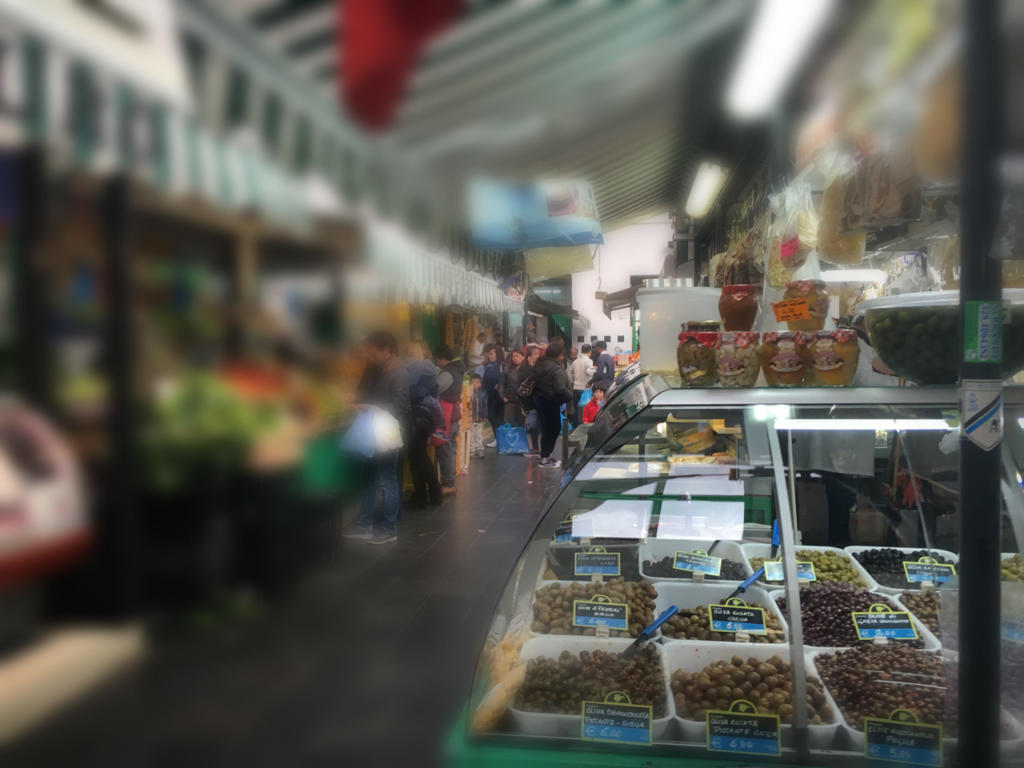 We arrived mid-morning the group back to where they started to cross again Piazza Vittorio and to stop at the Piazza Vittorio Market known for spices, exotic fruits and vegetables, food and clothes from Arab and Asian countries.
We arrived mid-morning the group back to where they started to cross again Piazza Vittorio and to stop at the Piazza Vittorio Market known for spices, exotic fruits and vegetables, food and clothes from Arab and Asian countries.
A break between the fish stalls, vegetables, dried fruits and among those of Indian fabrics, it’s time for lunch and it was nice having spent a few hours exploring this part of Rome “magic” with whom the companions the historic towns of meet up.
[codepeople-post-map]

Parole, lingua e linguaggio, arte e le nuove tecnologie sono quel filo rosso con il quale mi diverto a tessere le mie giornate. Innovazione e sviluppo di nuovi orizzonti gli spunti che mi fa piacere incontrare. Giornalista, editor, copy writer e content media. Dopo la laurea in Filosofia del Linguaggio e della Mente a Napoli, mi trasferisco a Roma dove mi specializzo in comunicazione per il web e i nuovi media e per diversi anni sono caporedattore del mensile “Next Exit, creatività e lavoro” approfondendo temi di economia della cultura. Ho curato la pubblicazione di diversi progetti editoriali, tra cui Young Blood, annuario dei giovani artisti italiani, e RomaCreativa, per fare una mappatura dei creativi italiani nel mondo e nella capitale.

